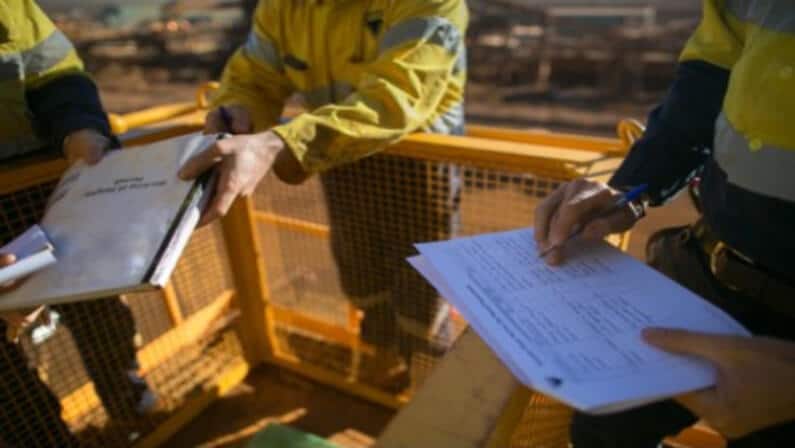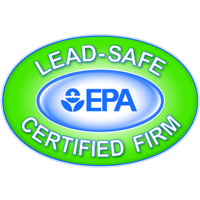A safety audit is done to determine if all the safety measures implemented in your workplace are effective.
The primary goal of placing a high priority on workplace safety at your business is to protect your employees from harm while they are at work. However, it is also an effective tool for recruitment and retention efforts.
Most employers in Houston make a wise choice by having their employees undergo safety training at ABC Safety Solutions.
 By conducting safety audits, you may evaluate the effectiveness of your current safety initiatives and identify possible hazards that you would not have otherwise recognized.
Here are more detailed reasons why audits are essential:
By conducting safety audits, you may evaluate the effectiveness of your current safety initiatives and identify possible hazards that you would not have otherwise recognized.
Here are more detailed reasons why audits are essential:
 Both are crucial elements for workplace safety. However, the challenge of employee well-being is approached differently in safety inspections and safety audits.
A safety inspection searches a facility for potential dangers and harmful procedures. A safety audit assesses an organization’s safety policies and procedures.
Both are crucial elements for workplace safety. However, the challenge of employee well-being is approached differently in safety inspections and safety audits.
A safety inspection searches a facility for potential dangers and harmful procedures. A safety audit assesses an organization’s safety policies and procedures.
 An evaluation of compliance with applicable laws, rules & regulations, and other orders and directives issued by the competent authority, is known as a compliance audit.
A compliance safety audit plays a significant role in supporting strict compliance with the OSHA standards and rules by implementing numerous programs, rules, training modules, and record-keeping procedures to guarantee workplace safety.
An evaluation of compliance with applicable laws, rules & regulations, and other orders and directives issued by the competent authority, is known as a compliance audit.
A compliance safety audit plays a significant role in supporting strict compliance with the OSHA standards and rules by implementing numerous programs, rules, training modules, and record-keeping procedures to guarantee workplace safety.
 One or more safety auditors look carefully for any obvious or possible dangers, safety concerns, and legal infractions while investigating the organization’s facilities, practices, employees, and programs. Most audits need a personal visit, even though some can be done online.
An auditor may utilize a checklist, score the organization in numerous areas, or record qualitative comments and observations, depending on the style and type of audit undertaken.
Auditors frequently take pictures, speak with workers and organizational officials, and gather other types of proof. This information is kept private, where only the auditor and the company being audited have access.
One or more safety auditors look carefully for any obvious or possible dangers, safety concerns, and legal infractions while investigating the organization’s facilities, practices, employees, and programs. Most audits need a personal visit, even though some can be done online.
An auditor may utilize a checklist, score the organization in numerous areas, or record qualitative comments and observations, depending on the style and type of audit undertaken.
Auditors frequently take pictures, speak with workers and organizational officials, and gather other types of proof. This information is kept private, where only the auditor and the company being audited have access.
 The next step is to go to the workplace you intend to assess. When examining the workplace, you may consider things like the lighting, placement of equipment, and signage.
Check the room’s lighting to see if it is sufficiently bright for individuals to see their surroundings and securely operate machinery. As for the equipment, check the location of the equipment to see if it has been safely stored and is easily accessible by the company.
Lastly, check if there are signages that alert individuals to potentially dangerous situations and provide instructions for using machines.
The next step is to go to the workplace you intend to assess. When examining the workplace, you may consider things like the lighting, placement of equipment, and signage.
Check the room’s lighting to see if it is sufficiently bright for individuals to see their surroundings and securely operate machinery. As for the equipment, check the location of the equipment to see if it has been safely stored and is easily accessible by the company.
Lastly, check if there are signages that alert individuals to potentially dangerous situations and provide instructions for using machines.
 Organizations and their workers, contractors, and clients can gain a lot from safety audits.
Here are just some benefits:
Organizations and their workers, contractors, and clients can gain a lot from safety audits.
Here are just some benefits:
What is a safety audit?
A safety audit evaluates if the workplace is secure, healthy, and conducive to employee productivity. It is a systematic procedure used to gather data about a company’s effectiveness, dependability, efficiency, and safety. This includes procedures for emergency situations such as an Emergency Spill Response. To evaluate these attributes, an auditor will look at the procedures, the working environment, the equipment’s condition, and other factors.Why are safety audits important?
 By conducting safety audits, you may evaluate the effectiveness of your current safety initiatives and identify possible hazards that you would not have otherwise recognized.
Here are more detailed reasons why audits are essential:
By conducting safety audits, you may evaluate the effectiveness of your current safety initiatives and identify possible hazards that you would not have otherwise recognized.
Here are more detailed reasons why audits are essential:
Adhere to federal regulations
Companies must adhere to safety regulations set forth by the federal and state governments. Organizational leaders may submit their results following a safety audit to legislators to demonstrate that they have complied with the criteria.Show dedication to safety in the organization
Showing dedication to safety goes a long way. In addition, regular safety audits make it easier for your staff to abide by rules and report risks. Moreover, it also helps build trust not only from your employees but also from your customers.Determine the cause of workplace injuries
When someone gets hurt on corporate property, the business may conduct a safety audit to determine what went wrong and, if necessary, look into the environment where it happened. This can lessen the likelihood of new injuries. Another measure you can take is to have your team do Occupational Health & Safety Training with ABC Safety Solutions.Update safety protocols
By conducting safety audits, you can find new risks and include them in your rules to keep everyone updated as time goes on. Safety Training can also be updated with customized training solutions where updated risks determined on the latest safety audit can be addressed.Safety Audits vs. Safety Inspections: What’s the Difference?
 Both are crucial elements for workplace safety. However, the challenge of employee well-being is approached differently in safety inspections and safety audits.
A safety inspection searches a facility for potential dangers and harmful procedures. A safety audit assesses an organization’s safety policies and procedures.
Both are crucial elements for workplace safety. However, the challenge of employee well-being is approached differently in safety inspections and safety audits.
A safety inspection searches a facility for potential dangers and harmful procedures. A safety audit assesses an organization’s safety policies and procedures.
What is a safety auditor?
Safety auditors will examine a company’s safety documentation. To evaluate these attributes, the safety auditor will look at the procedures, the working environment, the equipment’s condition, and other factors.What is the primary role of safety auditors?
Safety auditors’ primary role is to help maintain workplace safety. Their main objectives are identifying health and safety risks, evaluating the efficiency of control mechanisms, and confirming adherence to Houston’s Occupational Safety and Health Administration (OSHA) requirements.What are the three types of safety audits?
Safety audits are divided into three major areas based on the data they contain. These are the three categories:Compliance Audit
 An evaluation of compliance with applicable laws, rules & regulations, and other orders and directives issued by the competent authority, is known as a compliance audit.
A compliance safety audit plays a significant role in supporting strict compliance with the OSHA standards and rules by implementing numerous programs, rules, training modules, and record-keeping procedures to guarantee workplace safety.
An evaluation of compliance with applicable laws, rules & regulations, and other orders and directives issued by the competent authority, is known as a compliance audit.
A compliance safety audit plays a significant role in supporting strict compliance with the OSHA standards and rules by implementing numerous programs, rules, training modules, and record-keeping procedures to guarantee workplace safety.
Safety Program Audit
Program audits entail assessing different safety measures after carefully dissecting each component and all employee feedback to identify the program’s successful safety outcomes. To ensure that employees perceive your company’s efforts to promote safety, involve them in safety training programs through ABC Safety Solutions.Management System Audit
Compliance Audit and Program Audit combined is what make Management System Audit. The standard auditing process, employee interviews, compliance assessments, and workplace observations are integrated into a management system audit. This audit attempts to assess the overall safety procedure’s performance in the present and determine whether it complies with corporate policy and legal requirements.What does a safety audit include?
Safety audits share the same basic steps, no matter who the auditor is. These steps start from the beginning to the last part of the safety audit. Here are the following:Preparation
An organization chooses a safety auditor after determining it is time for an audit. Many businesses have access to auditors via their EHS solution providers; others must explore within their networks or research to find the best person or business to hire. The parties then communicate and plan for the audit, deciding on its objectives, timetable, and scope. At this point, the auditor may either schedule a date to visit the company’s facilities or request preliminary documentation and information from the firm.Conducting the audit
 One or more safety auditors look carefully for any obvious or possible dangers, safety concerns, and legal infractions while investigating the organization’s facilities, practices, employees, and programs. Most audits need a personal visit, even though some can be done online.
An auditor may utilize a checklist, score the organization in numerous areas, or record qualitative comments and observations, depending on the style and type of audit undertaken.
Auditors frequently take pictures, speak with workers and organizational officials, and gather other types of proof. This information is kept private, where only the auditor and the company being audited have access.
One or more safety auditors look carefully for any obvious or possible dangers, safety concerns, and legal infractions while investigating the organization’s facilities, practices, employees, and programs. Most audits need a personal visit, even though some can be done online.
An auditor may utilize a checklist, score the organization in numerous areas, or record qualitative comments and observations, depending on the style and type of audit undertaken.
Auditors frequently take pictures, speak with workers and organizational officials, and gather other types of proof. This information is kept private, where only the auditor and the company being audited have access.
Reporting
The auditor writes a report outlining their findings after the audit is finished. With various types of statistics, charts, and graphs, this report often explains what is and isn’t working while highlighting the relative priority and severity of critical safety issues. Good safety auditors also make suggestions for enhancing safety programs.Corrective and preventive actions
This step happens after the auditing has been done, wherein the organization’s internal staff begins addressing the audit findings independently or with the safety auditor’s assistance. Correcting current issues and stopping potential sources of risk from growing in the future requires corrective and preventative activities to be effective.How to perform a safety audit
A great way to understand how to increase the safety of your team is through safety audits. When it’s already time to perform a safety audit, be guided by these steps:Designate your audit team
Establishing a team to evaluate the workplace is the first step. Teams for safety audits often have three to five members. Some companies may delegate internal employees to audit, while others may hire consultants to provide an unbiased viewpoint. Once your audit team is put together, ensure they are familiar with the Occupational Safety and Health Administration‘s guidelines (OSHA). And regardless of who joins the audit team, team members must assess each other’s settings rather than their own to produce objective results.Prepare for the safety audit.
Reviewing the organization’s safety procedures and creating a checklist may be helpful to the audit team. This checklist can point out areas that need closer examination. Delegating responsibilities to specific team members can also be part of the preparation process for safety audits. As an illustration, two team members could collect samples while others conducted interviews.Visit the work environment.
 The next step is to go to the workplace you intend to assess. When examining the workplace, you may consider things like the lighting, placement of equipment, and signage.
Check the room’s lighting to see if it is sufficiently bright for individuals to see their surroundings and securely operate machinery. As for the equipment, check the location of the equipment to see if it has been safely stored and is easily accessible by the company.
Lastly, check if there are signages that alert individuals to potentially dangerous situations and provide instructions for using machines.
The next step is to go to the workplace you intend to assess. When examining the workplace, you may consider things like the lighting, placement of equipment, and signage.
Check the room’s lighting to see if it is sufficiently bright for individuals to see their surroundings and securely operate machinery. As for the equipment, check the location of the equipment to see if it has been safely stored and is easily accessible by the company.
Lastly, check if there are signages that alert individuals to potentially dangerous situations and provide instructions for using machines.
Observe employees working.
You can tell if team members adhere to the company’s safety rules by watching them work in their environment. For example, you can observe them operating and maintaining machinery and if they are wearing safety gear like gloves, helmets, or goggles.Interview employees.
It could be beneficial to speak with the location’s manager. Inquire about the methods used to refill supplies and the hiring and onboarding procedures. Gain an understanding of the decision-making and directive communication processes used by management to approve the use of specific equipment.Evaluate the data.
You can assess your results and conclude the area’s adherence to safety protocols after physically inspecting the region and gathering data. Ranking the data from most urgent to least urgent may also be helpful, which can assist managers in taking prompt action to address more critical issues.How Often Should Safety Audits Happen?
Generally, a company should perform a safety audit at least once a year. To reduce their risks, some organizations—particularly larger organizations—conduct safety audits more frequently (for instance, every six or three months). In addition, other businesses are required to conduct audits on specified dates due to internal regulations, demands from consumers or shareholders, directives from OSHA or another regulatory agency, or orders from those organizations.What are the Benefits of Performing a Safety Audit?
 Organizations and their workers, contractors, and clients can gain a lot from safety audits.
Here are just some benefits:
Organizations and their workers, contractors, and clients can gain a lot from safety audits.
Here are just some benefits:
- Increased worker safety
- Fewer incidents, illnesses, and injuries which means decreased costs for workers’ compensation and a lesser chance of lawsuits
- Less risk of non-compliance and regulatory uncertainty
- Increased staff morale and productivity













